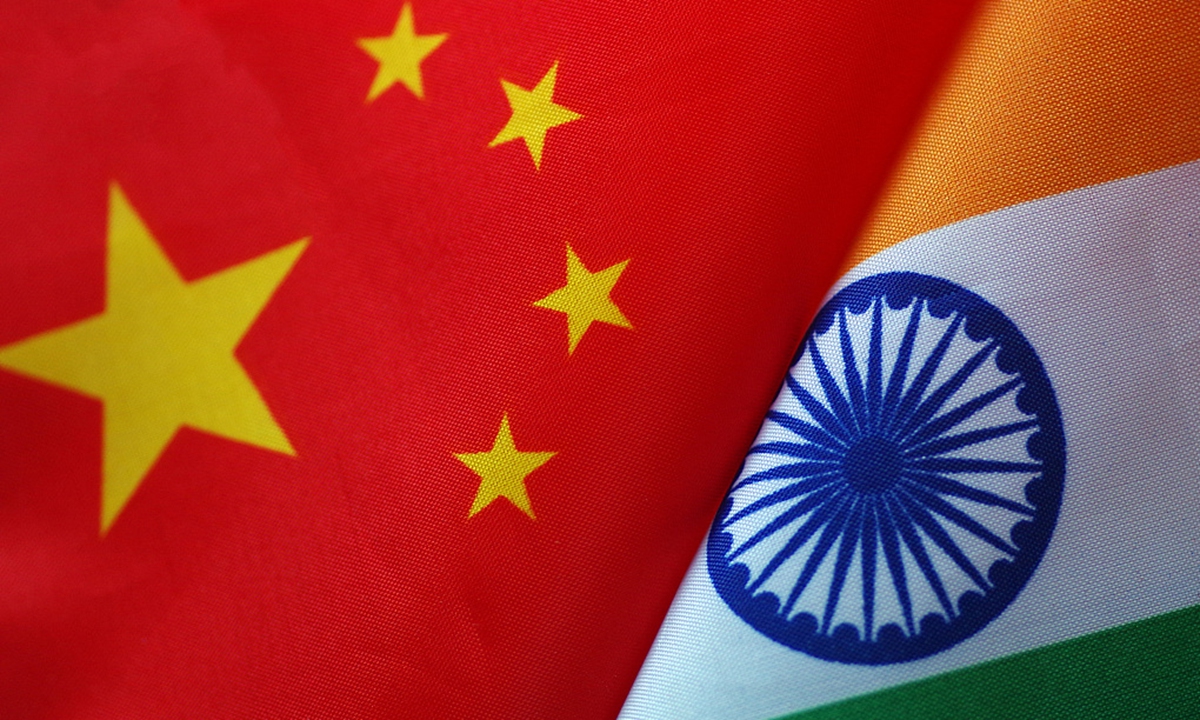India’s border fire may lead to ‘unbearable consequence’
Source: Global Times Published: 2020/9/26 23:41:26

China India. Photo: VCG
Chinese observers warned on Saturday that India's latest tricks of doubling troops at the border and authorizing frontline soldiers to fire in clashes with the Chinese army, all while agreeing to de-escalate tensions at the negotiating table with China, could further increase the risk of conflict at the border and lead to dangerous consequences for itself.
Although China and India agreed to stop sending more troops to the border frontline at the latest round of the Military Commander-Level Meeting, tensions continue to flare as New Delhi appears to have no sincerity in keeping its commitment. Given intense tensions, China should be alert to India's tricks along border areas, and prepare for possible military conflicts which may become new normal in the border region in the near future, experts urged.
The Hindu cited an anonymous senior government official as saying on Thursday that Indian soldiers are authorized to fire if the PLA comes close. Shots have been fired in the air on multiple occasions on the north and south banks of Pangong Tso lake in eastern Ladakh recently, the Indian media reported.
"Authorizing frontline soldiers to fire in possible clashes is a provocation to the PLA. India has never given up the illusion to nibble at China's territory along the border areas, which the Chinese soldiers should be highly alert to," Song Zhongping, a Chinese military expert and commentator, told the Global Times on Saturday.
Song noted that the 1962 China-India War happened in winter, and there is still a possibility for India to provoke China in the upcoming winter, as its domestic problems linger and get worse. The 1962 war ended with India's all-around failure.
Data from Johns Hopkins University shows India has reported more than 5.9 million COVID-19 cases as of Saturday, the second largest number of confirmed cases globally.
China and India's agreements on not sending troops to the frontline is a good sign, as a long-time stand-off along the border areas would increase the risk of clashes. But India should also fulfill the agreements reached by the two sides, Qian Feng, director of the research department at the National Strategy Institute of Tsinghua University in Beijing, told the Global Times on Saturday.
However, aside from the very frontline border areas which have limited space for troops, India has never stopped facilitating infrastructure construction in the border areas and making military preparations, Qian said. He noted that 200,000 to 300,000 Indian soldiers have been deployed to the border areas with Pakistan and China.
The Indian army is ready to be deployed in the harsh winter months, as it has stocked up on essential supplies, including food, clothing and fuel, for soldiers in Ladakh, Indian Major Gen. Arvind Kapoor was cited by ANI as saying two weeks ago.
Hindustan Times also reported that since 2019, India has sharpened its focus on increasing infrastructure along the border, and set a target of three years to complete all 61 strategic road projects along its northern frontier.
However well India has claimed to make preparations for possible clashes, its shortages on infrastructure construction to the border areas, ability to conduct large-scale operations in winter, and its ability to supply frontline soldiers are not easy to hide or make up in a short time, Chinese experts said.
Further provocations along the border areas toward China and clashes will bring India unbearable consequences, they warned, noting that aside from making military preparations, India is also sending diplomatic signals.
Indian External Affairs Minister Subrahmanyam Jaishankar on Thursday said at the World Economic Forum Development Impact Summit that the months-long border standoff between India and China is "one facet of a larger phenomenon for which both have to sit down and find a solution."
Chinese State Councilor and Foreign Minister Wang Yi met with Jaishankar on the sidelines of the Shanghai Cooperation Organization foreign ministers' meeting in Moscow earlier this month, in which they reached a five-point consensus to cool down border tensions.
Experts said that the successful implementation of the consensus depends on whether India can truly keep its word to avoid the agreements reached turning into "paper talk." They also warned that Indian media should also stop spreading fake news and rumors to hype China's threat, or add fuel to nationalism, as it does no good to bilateral ties.
For example, Indian media claimed that China has continued to "invade Nepal inch by inch, and construct buildings on the captured lands."
However, the Ministry of Foreign Affairs of Nepal refuted the claims in a release on Wednesday, saying that "The Department of Survey, Government of Nepal, based on the official records, reports of the joint field inspection and boundary maps, has verified and confirmed that the said buildings are not located within Nepali territory."
"It is India that always thinks it dominates Nepal, and by hyping China's 'invasion' of Nepal, India is making itself an excuse to enter into Nepal to control the country," Song said, noting that Indian media is creating momentum for India's hegemonic actions.
RELATED ARTICLES:
Posted in: DIPLOMACY